Elgato Facecam MK.2 review: Pack it up folks, Elgato is on the verge of perfecting the webcam.
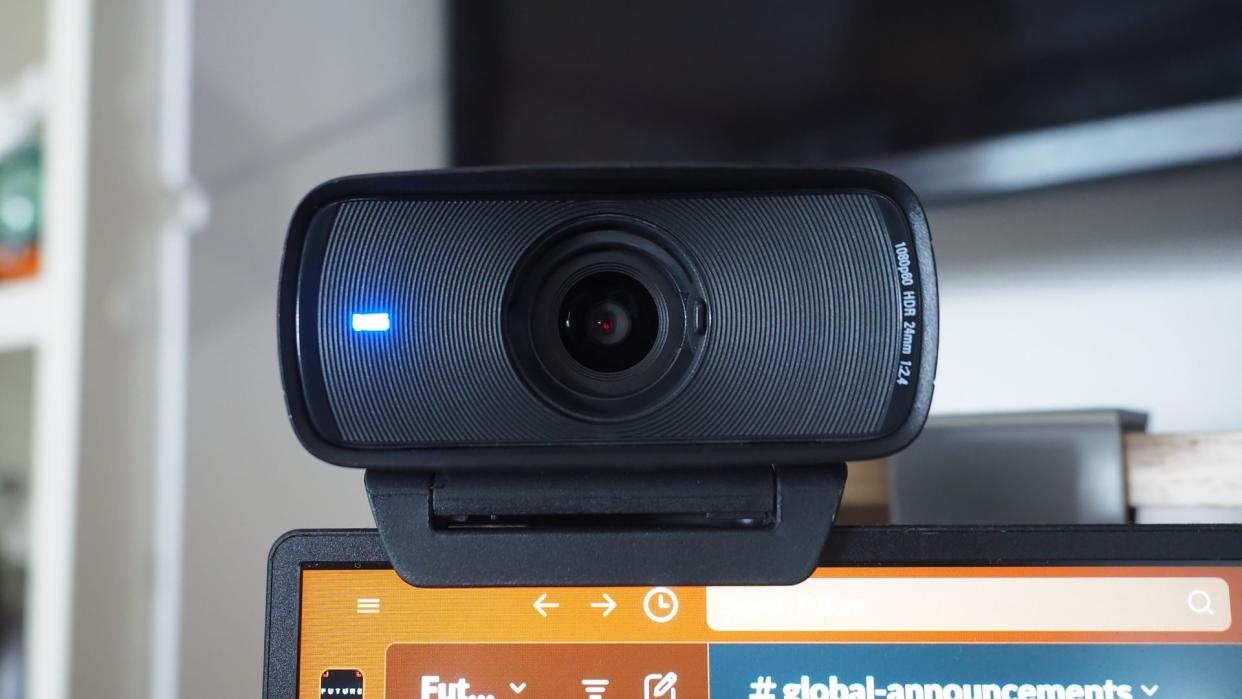
Webcams went from a fun social accessory to a critical part of the home office, post-pandemic, and the overall quality of webcams has risen to match demand. Say hi to the Elgato Facecam MK.2, which runs at $149.99 from retailers like Amazon.
I've used tons of webcams over the years, from the cheapest no-brand ones to the most expensive offerings from the likes of LG, Razer, and Elgato. I also use a DSLR mount with an Elgato Cam Link when I'm feeling fancy, but the vast majority of people don't need to go so crazy with their setups. I typically use the Razer Kiyo or the previous Elgato Facecam depending on where I am, but always felt like Razer had a bit of an edge here. Until now.
Indeed, whether you're streaming video games on Twitch and YouTube or joining remote meetings, a typical option from round ups like our best webcams list is usually enough to get the job done. But if you want to go to the next level, you may need to spend a bit extra. Luckily, you won't need to spend too much to get a high-quality experience, thanks to brands like Elgato, who have been iterating rapidly on its camera options in recent years.
Recently, I've been reviewing the Elgato Facecam MK.2 from the firm, which actually comes in cheaper than its predecessor did, at just $149.99, despite being far more potent in features. Should you buy it, though?
Elgato Facecam MK.2 Review: Pricing and Specs
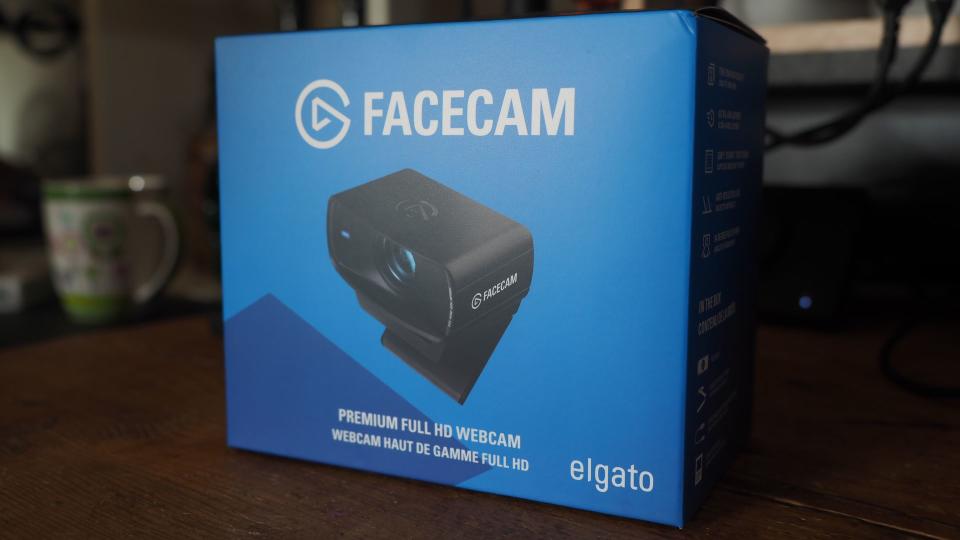
Elgato Facecam MK.2 Specs
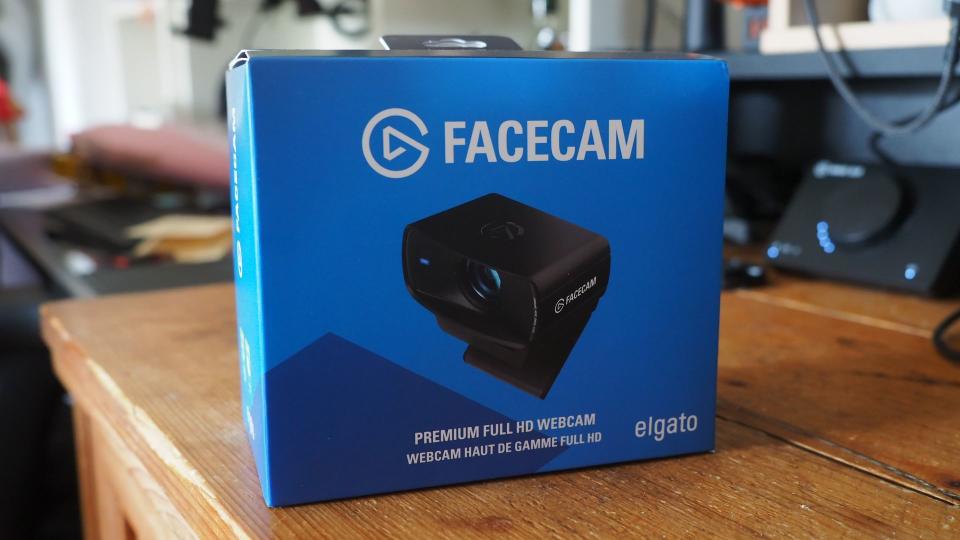
• Price: $149.99 at Amazon.
• Optics: Sony Starvis CMOS 1/2.5".
• Resolutions: 1080p60, 1080p30, 720p120, 720p60, 720p30, 540p120, 540p60, 540p30.
• Camera spec: 24mm (full-frame) focal length, 84 degrees FOV, f/2.4 aperture.
• Dimensions: 84 x 38 x 61 mm.
• Weight: 136g.
• In the box: Camera, monitor mount with universal screw mount, USB-A to USB-C 3.0 cable (2 meters), quick guide.
Perhaps the most notable thing about the Elgato Facecam MK.2 at a glance is its price point. Yes, it's more expensive than other 1080p60 webcams out there, but it also does a lot more. Owing to the Facecam MK.2's powerful software, we have full DSLR-like control to take advantage of the camera's impressive sensor, which has an incredibly broad 84 degree field of view complete with software face tracking and powerful background blurring. It also has integration for NVIDIA's augmented reality SDK which adds dynamic eye contact adjustments, so you can appear as though you're looking at the camera directly at all times.
The Facecam MK.2's predecessor had far fewer features than this overall, but came in at $199.99 originally which even back then, I felt was far too expensive. The $149.99 price point here feels far more fair, especially given all the features that it's packing in the box. The Elgato ecosystem is also a lot more "mature" now, meaning integrations with other Elgato devices alongside the software ecosystem is generally better and more usable than other options on the market right now. It's frankly impressive that they were able to pull it off without it being more expensive, especially given the current economic landscape.

Elgato Facecam MK.2 — $149.99 at Amazon
The Elgato Facecam MK.2 is an affordable mid-range option from one of the world's leading PC accessory manufacturers. Boosted features and quality meet a better launch price point to make this one of the best webcams we've seen in recent memory.
See at: Amazon | Elgato | Best BuyView Deal
Elgato Facecam MK.2 Review: Hardware and Design
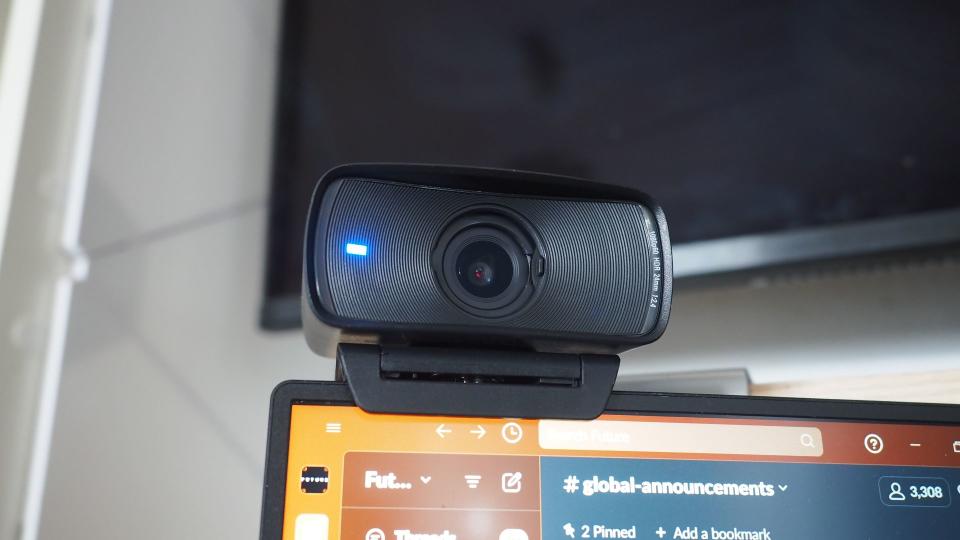
The Elgato Facecam MK.2 sports quite a similar design to its predecessor, all black plastic with rounded corners, a textured front-face with a central Sony Strava Elgato Prime camera sensor right in the middle. It has a blue activation light embedded on the left side, and sits on a highly adjustable monitor clamp complete with a universal screw beneath for mounts and things of that nature.
Where it diverges a bit from its predecessor is its height and width. Elgato has managed to shrink the overall footprint of the device, decreasing its height and giving it a more elongated shape. The device retains the subtle hoods on top and bottom to reduce potential monitor glare, and houses a powerful internal heatsink to distribute heat. Indeed, there's a lot of hardware packed into this device, with onboard memory for storing settings, as well as onboard encoding and processing to increase response times.
The Facecam MK.2 sports an integrated physical privacy shutter, which is a nice touch, although it's a little awkward to open unless you have long nails. Even still, it's better than the separate privacy cover included in the previous version, which could easily get lost if your desk is a little messy, like mine often is. Elgato included a USB 3.0 high-speed cable in the box to accommodate its onboard processing features, but it's incredibly rigid and difficult to maneuver, as a result, it can interfere with the position of your camera in some situations. It's by no means a deal breaker, though, and you can always buy a different cable as long as it meets the required speed specs if it doesn't work for you.
Overall, the Facecam MK.2 represents functional and sleek design conventions, with some welcome refinements over its predecessor. It remains cool while in operation, and its wider footprint makes it a little less bulky and a little more balanced than the MK.1. But webcams are less about the physical presence, and more about your virtual presence. How's the camera sensor?
Elgato Facecam MK.2 Review: Cam Quality and Features
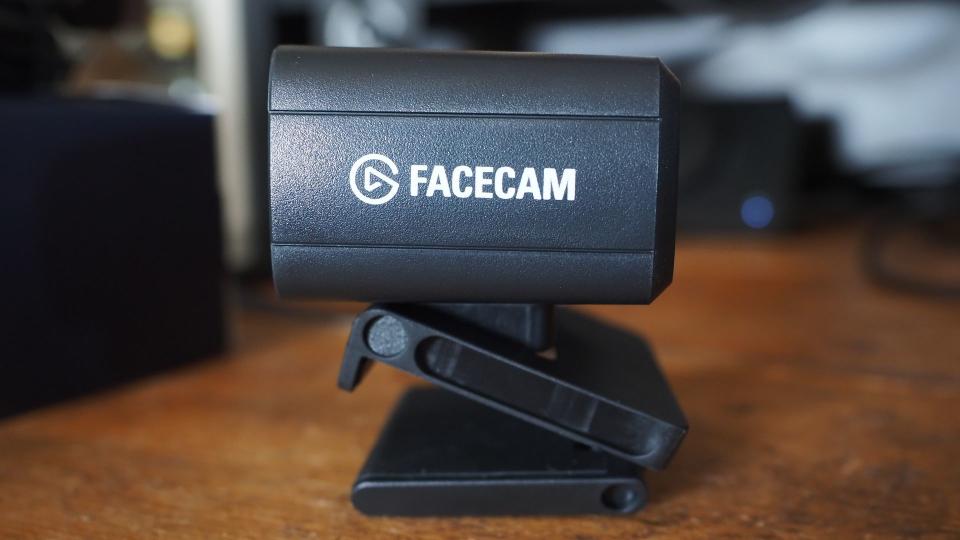
The Elgato Facecam MK.2 goes up to 1080p 60 FPS which is ideal for streamers. If you're someone who streams games at 60 FPS, this camera will ensure that your frame rate matches your gameplay, with resolution to match. The wide angle also gives you a lot of options for framing your content and your background, with field-of-view sliders and other adjustments available within the Elgato Camera Hub app.
Indeed, a ton of the Elgato Facecam MK.2's primary functionality and features can be controlled down to minute details within the app, which has become very good over the last few years. When I initially used the Camera Hub back in the day, I found it quite unstable and crash-prone in some situations, but in 2024, that simply isn't the case. It has become very stable, and also has mountains of features to elevate your webcam experience.
Elgato addressed many of my concerns about the Camera Hub from my previous review. There are now mountains of post-processing and configuration features that can also be saved directly into the camera's onboard storage. Previously, I had to use an external solution to get decent background blurring and virtual depth of field, but Elgato has it built in now, and it's among the best virtual depth of field solutions I've ever used. It also incorporates NVIDIA's camera SDK for virtual eye contact tracking, if you want to make sure you appear to be looking into the camera at all times.
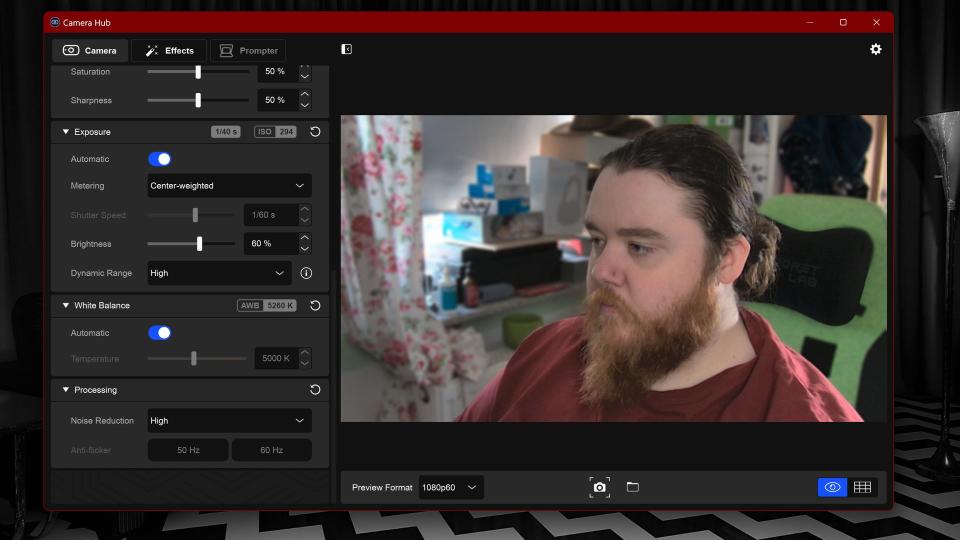
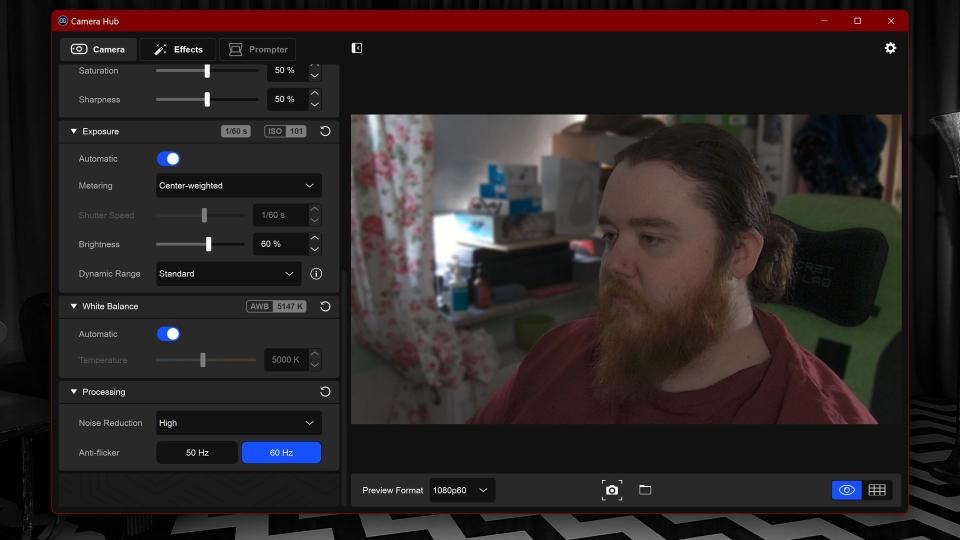
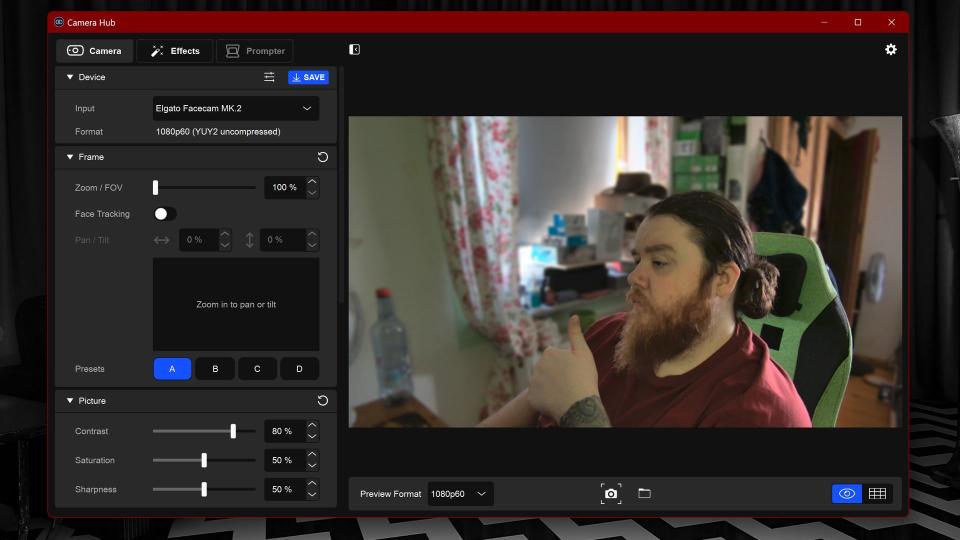
The default field of view is incredibly generous.
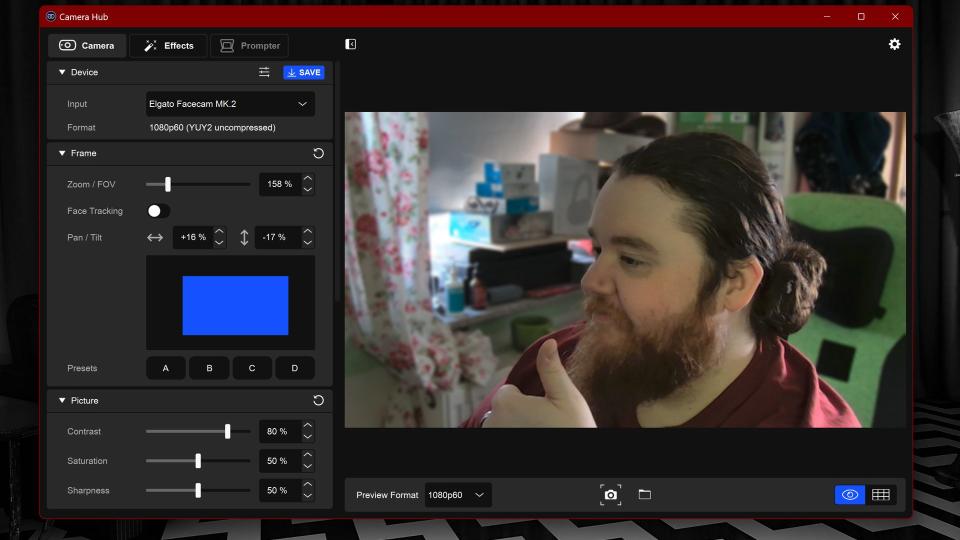
You may prefer to zoom in a bit, though.
You can adjust the field of view to a large degree, zooming far out to show off your entire space or zooming in for a more intimate headshot. It also has head tracking, which is a great addition, although the motion isn't the smoothest out there. Elgato could include some easing animation there to make it look a little less jerky, perhaps. It's a minor gripe, though.
The app also has plenty of standard options, such as contrast and saturation adjustments. It also sports powerful auto HDR control as well, which is a welcome boon as someone who works in a very strangely lit environment. We have two windows in this room, both of which glare on the screens if I don't close them. As such, it's often very dark in my office. To accommodate that, I have backlights to improve my camera quality, but even without these turned on, the Elgato Facecam MK.2 offered great picture quality. It has denoising smoothing as well, which is decent as well if you're in a darker room. Professional setups will want to use some sort of lighting perhaps, but if you're just streaming for fun and not taking it too seriously, the auto HDR here is a great half-measure without breaking the bank or rearranging your setup. The video feed is also incredibly smooth, and allows you to adjust the refresh rate to accommodate the flicker rate of LED backlights, at 60 Hz and 50 Hz.
While the Facecam MK.2 will struggle in dark environments like almost any web camera on Earth, it fares far better than most solutions I've used. The background blurring is incredibly sharp and realistic, and the camera is likely to only get better overtime as more features get injected into the software. I am incredibly satisfied.
Elgato Facecam MK.2 Review: Competition
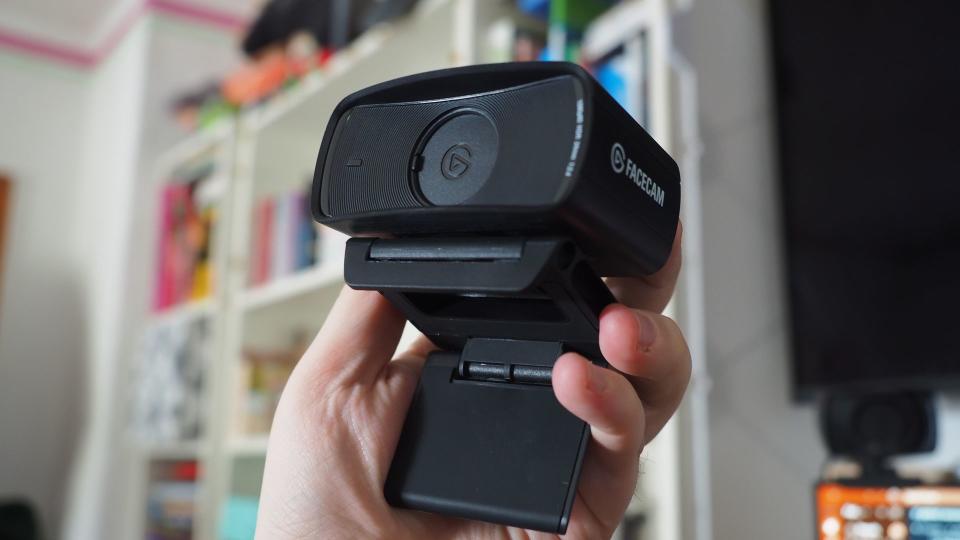
Perhaps the most obvious competition here is the Razer Kiyo Pro. The Razer Kiyo Pro is similarly priced, RRP at $199.99, however, and also has HDR, 1080p 60 FPS, and a wide angle lens for a highly adjustable experience. The Razer Kiyo Pro is also down to $99 as of writing, which is a steal if you can get it at that price. There's also the Logitech Streamcam as well, which comes in a bit cheaper.
I feel like the Elgato Facecam MK.2 beats the Razer Kiyo in some ways, notably with anti-flicker tech and onboard background blurring. I think the Razer Kiyo Pro has an edge when it comes to brightness in challenging conditions, however. But, where I feel the Elgato Facecam has a big edge is when it comes to the overall ecosystem. Coupled with Elgato Key Lights and Elgato Stream Deck and other accessories, I feel like Elgato offers an overall more complete control package than Razer right now, although the gap may close over time.
It boils down to price ultimately. Typically, you'll get a better $50 saving on the Elgato Facecam MK.2, but the Razer Kiyo Pro is quite old at this point, and is frequently on sale. If you can get the Kiyo Pro cheaper, that might be a better option, given that it sports many of the same features and provides at least comparable results. If you don't need all the bells and whistles, there are cheaper options too, like the Logitech Brio.
Elgato Facecam MK.2 Review: Final thoughts
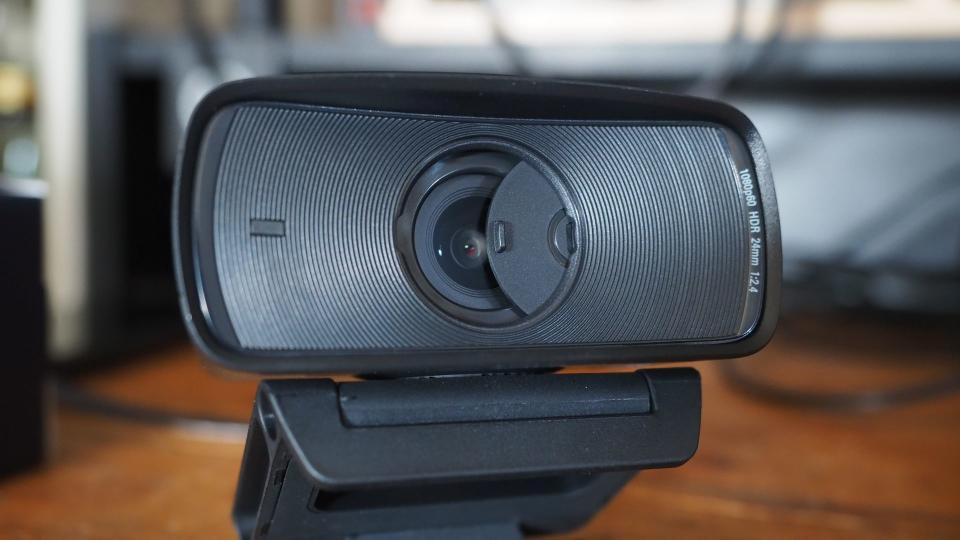
My gripes with the Elgato Facecam MK.2 are relatively minor. The tautness of the cable and awkwardness of the privacy shutter are not exactly deal breakers by any means, and the HDR brightening capabilities are generally standard for this price point. All cameras operate on light after all, and if you want a better experience you may struggle to find a comparable option at this price point.
Elgato addressed many of my previous complaints with the MK.1 version. The software is vastly improved, the privacy shutter is now integrated rather than separate, and the overall footprint is reduced with a more evenly distributed weight profile.
You should buy this if ...
You should not buy this if ...
The Elgato Facecam MK.2 is another step up for the firm, whose suite of capture cards and other accessories are challenging long-standing front-runners like Razer in the streaming space. Elgato has become my go-to brand for simple mic interfacing, stream control, lighting rigs, and now visuals too. I'm intrigued to see how much further Elgato will push the quality bar in the coming years ahead, and can't recommend the Elgato Facecam MK.2 enough. Just make sure you actually need it, though.

